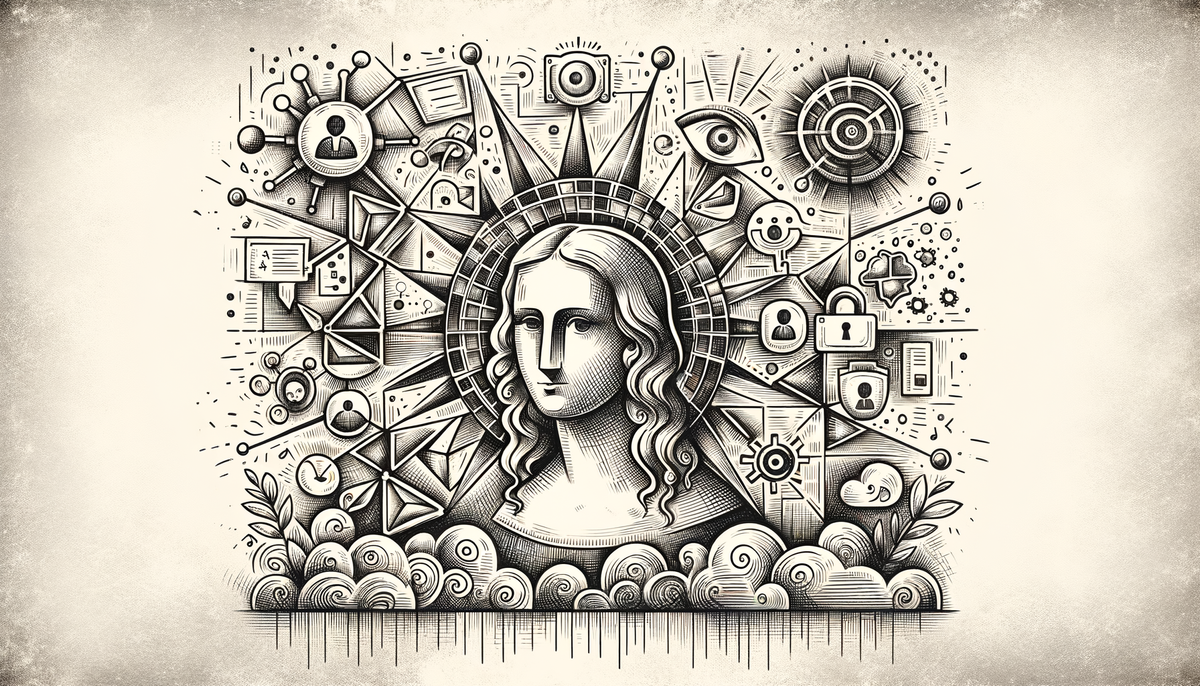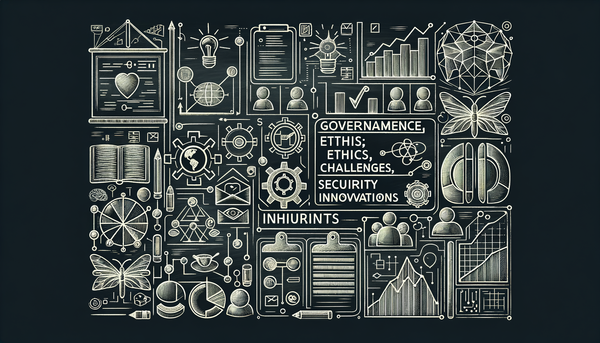Exciting AI Developments and Innovations

Amid rising concerns over technology misuse and rapid innovations, recent AI developments reveal a fascinating duality — from cutting-edge advancements that reshape our daily tools to serious implications of privacy and cybersecurity vulnerabilities.
Security and Privacy in a Hyperconnected World
In today’s digital age, security challenges remain at the forefront of technological discourse. Recent reports, such as one detailing viral TikToks promoting “undetectable” GPS trackers enabled by the Find My network, reveal that while innovation brings convenience, it also opens new avenues for misuse. This unsettling potential for stalking and personal tracking forces us to confront the darker side of AI integration in everyday gadgets. As 9to5Mac illustrates, even features designed for benign tracking and sharing can be repurposed with harmful intent.
The debate on the balance between innovation and security is not merely technical but moral. Researchers and security experts have repeatedly stressed the need for robust regulation and built-in safeguards in these complex ecosystems. This issue resonates with recent discussions on our AI news update from AI.Biz, where experts debate transformations and the accompanying challenges at the forefront of AI.
"Artificial intelligence is growing up fast, as are robots whose facial expressions can elicit empathy and make your mirror neurons quiver." – Diane Ackerman, The Human Age: The World Shaped By Us
It is crucial for developers and regulators alike to be proactive. While technology can enhance convenience and productivity, public trust hinges on proven oversight and transparent user consent. The transforming digital landscape underpins a compelling narrative: innovation is inseparable from responsibility.
Empowering Emergency Services With AI
A notable application of AI lies in its ability to fill critical gaps in emergency services. With many 911 centers facing severe understaffing, AI has stepped in as a potential lifesaver by answering calls. A detailed analysis on TechCrunch examines how AI-powered systems are being deployed to manage the surges in emergency communication. The use of AI in these high-pressure contexts is not only a technical marvel but a vital intervention that could save lives.
Although there is an inherent caution in relying too heavily on technology in crisis situations, historical precedents support prudent AI application in high-stakes scenarios. Experts advocate that AI should serve as a complement rather than a replacement for human judgment and empathy. AI.Biz’s podcast update on recent developments delves into these nuanced debates, highlighting that the best outcomes are achieved when technology and human oversight work in tandem.
The recent use cases of AI in emergency calls bring into perspective an emerging pattern in technology evolution, where pragmatic benefits often outweigh initial hesitations. It prompts us to consider the long-term societal impacts and how regulated AI could redefine emergency readiness.
Enhancing User Experience: AI in Everyday Gadgets
From health wearables to smartphone innovations, the trend of embedding AI into everyday devices is reshaping how consumers interact with technology. A striking instance is the integration of an AI coach in the Fitbit ecosystem, which might be one of the Pixel Watch 4's most intriguing features. According to Android Central, while the target audience might not be completely ready for such innovative interaction, the potential to encourage healthier lifestyles using real-time insights is immense.
Similarly, the Pixel 10 Pro has been lauded in early impressions on TechCrunch for its seamless integration of Google’s AI capabilities, turning a traditional smartphone experience into a smarter, more proactive tool. These innovations are carefully mapped out to bring personalized experience — AI algorithms learn from user behavior and preferences, ensuring that technology adapts, rather than the user having to adjust.
Modern gadgets are increasingly becoming platforms where the boundaries between hardware and intelligent software blur. For instance, WhatsApp’s latest move to offer an AI-powered writing assistant encourages everyday users to engage with technology more creatively and efficiently. As pointed out by Engadget, such advancements can boost productivity and enhance digital communication.
The transformative impact of integrating AI in consumer products was accented in our overview of AI innovations on AI.Biz, prompting a reflection on how these bleeding-edge tools redefine user expectations and market dynamics.
AI and Its Constant Quest for Robustness
However, not all innovations are free of challenges. OpenAI’s recent admission regarding ChatGPT safeguards during extended conversations brings to light the persistent quest for robust and ethical AI. The acknowledgment of these limitations — following a tragic incident that underscores the importance of crisis management — emphasizes that even sophisticated models can falter under complex emotional and contextual demands.
The reflection on these safety failures is a sobering reminder that implementing AI in sensitive domains requires continuous validation and iteration. The very fact that these safeguards can fail in extended dialogues calls for a broader discussion on AI ethics and the need for improved algorithms that better understand human nuance. For those interested in the nuances of AI operational safety, further reading on Ars Technica offers a deeper dive into this concern.
"I often tell my students not to be misled by the name 'artificial intelligence'—there is nothing artificial about it. AI is made by humans, intended to behave by humans, and, ultimately, to impact humans' lives and human society." – Fei-Fei Li, The Quest for Artificial Intelligence
These discussions prompt important questions about the trade-offs between automation efficiency and ethical responsibility. The community continues to grow more aware that while AI can greatly enhance our lives, it must be integrated with a deep commitment to safety and human values.
Technology Race: Giants and Innovations
The competitive edge in AI development is heating up as global powerhouses jump into the fray. Recent highlights include the noteworthy claim from a16z’s latest AI report that underscores how Google and Grok are rapidly catching up to ChatGPT. This race not only fuels healthy competition but also enriches the ecosystem with diverse approaches and creative methodologies. The evolving narrative in AI development ensures that users benefit from multiple perspectives and solutions to similar challenges.
In another interesting twist in technology acquisition, an article on 9to5Mac reveals that former Apple executive Eddy Cue once pushed for significant acquisitions — moves that might have altered the tech landscape had they proceeded. While Apple’s then-CEO Tim Cook decided against these acquisitions, the story serves as a historical reflection on strategic decisions influenced by technological trends and market forecasts.
These insights remind us that innovation thrives not only on new technologies but also on the strategic choices made by industry leaders. Observing the competitive spirit helps users and investors alike to appreciate the multifaceted journey of technological evolution.
Redefining Security in the Age of AI-Generated Threats
On the cybersecurity front, a concerning development is the emergence of AI-generated ransomware. Wired’s recent exposé explains how cybercriminals are harnessing the power of AI to develop more sophisticated and adaptive malware. This alarming trend signifies a turning point in digital security where attackers leverage autonomous systems to evade traditional defenses.
The sophistication of such malware is particularly worrying given its potential to rapidly adapt to security countermeasures. The intersection of AI and cybersecurity invites both innovation and caution. Security firms are now prompted to rethink their defense strategies, integrating machine learning and predictive analytics to stay a step ahead of adversaries. The evolving threat landscape acts as a wake-up call that technological advancement must be accompanied by equally advanced security measures.
To foster a secure future, it is imperative for companies, regulators, and academic institutions to expand collaboration. Innovations like Malaysia’s unveiling of the country’s first edge AI processor, as reported by TechCrunch, signal a promising trend where localized and specialized AI applications might provide the nuanced oversight needed in cybersecurity applications.
Diverse Perspectives: Global Innovation and Local Impact
The proliferation of AI isn't limited to established tech hubs. Innovations are emerging from unexpected quarters as companies worldwide harness AI's potential to solve unique problems. For example, Malaysia’s SkyeChip launching the first edge AI processor illustrates how local markets are beginning to leverage AI to meet distinct regional needs. The edge processor brings advanced capabilities directly to devices, reducing latency and empowering real-time applications — a significant step for industries reliant on localized data processing.
Meanwhile, consumers remain excited about the potential of everyday AI-powered enhancements. With WhatsApp’s introduction of an AI writing assistant, users can now experiment with seamlessly integrated tools that boost communication quality and creativity. Such upgrades exemplify a broader trend of embedding AI into user interfaces and a reflection of how our daily interactions are being reimagined.
These examples underline an undeniable truth — AI is not a uniform force but a diverse ecosystem that touches multiple facets of our personal and professional lives. It's an exciting era where traditional boundaries fade and technology is redefined through local ingenuity and global standards.
Reflecting on the Broader Implications and Future Directions
As we traverse the varied landscape of AI applications and challenges, a few themes emerge: the critical importance of security and ethical standards, the transformative impact of AI on everyday technology, and the intense competitive spirit driving industry giants. These developments invite us to reconsider not just how technology works, but why it must be pursued with a deep sense of responsibility.
This exciting epoch in AI, with its blend of groundbreaking innovations and significant challenges, reminds me of a quote by Fei-Fei Li that resonates deeply: "AI is everywhere. It's not that big, scary thing in the future. AI is here with us." This sentiment encapsulates the present reality where AI is becoming as ubiquitous as the air we breathe, guiding everything from emergency services to personal gadgets.
For enthusiasts and professionals alike, a thoughtful engagement with these trends is essential. Experimenting with new tools like AI-powered writing assistants may seem trivial, yet it represents a microcosm of global innovation at work. At the same time, grappling with cybersecurity threats reminds us that progress always accompanies risks, demanding vigilance and a commitment to ethical standards.
Further Readings
To explore more insights and detailed discussions on these topics, consider visiting:
- Transformations and Challenges at the Forefront of AI
- Innovations and Challenges in AI: An Overview
- Exploring Recent Developments in AI
- AI Podcast: Innovations and Trends
Final Thoughts
The rapid evolution of AI offers both a promise of great advancements and a cautionary tale of responsibility. As we push the boundaries of what is possible, the key lies in ensuring our innovations are secure, empathetic, and ethically aligned. Each breakthrough brings us closer to a future where AI's transformative power is paired with an unwavering commitment to human values — a future that is as promising as it is challenging.




